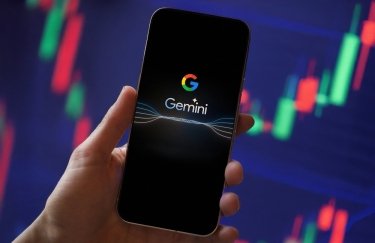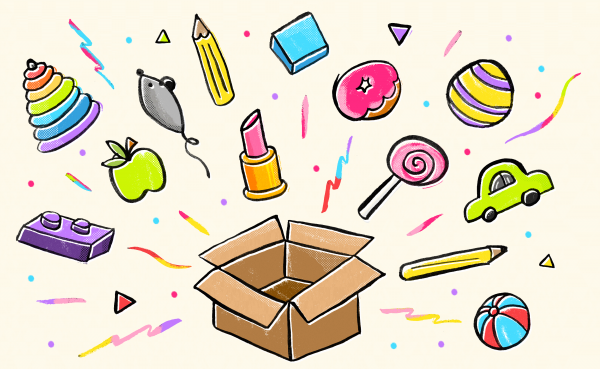 ” alt=”How YouTube is changing toys” />
” alt=”How YouTube is changing toys” />
How YouTube is changing toys
Kids are obsessed with YouTube unboxing videos. The toy industry is taking notice.
By
Chavie Lieber@ChavieLieber
Mar 22, 2019, 8:10am EDT
Share
Tweet
Share
Share
How YouTube is changing toys
tweet
share

New York City’s Javits Center is a big, boring building that hosts big, boring conferences.
But on a recent day in February, the Manhattan convention center was filled with giant Lego dinosaurs, twirling K’Nex roller coasters, flippable sequin-covered Beanie Babies, 3D Harry Potter puzzles, shooting Star Wars figurines, dissolvable bath bombs in every scent imaginable, and tons and tons of colorful, sticky, gooey goo.
Javits was hosting the Toy Fair New York, where more than 1,000 toy companies from around the world had come to show off their wares. Among the blocks, puzzles, kites, knickknacks, games, gadgets, and slime, toy store owners were bee-lining to one very specific toy: L.O.L. Surprise! Dolls.
These cute, tiny creatures are made by MGA Entertainment, the industry giant that infamously took on Mattel’s Barbie with its Bratz dolls. MGA sold more than $4 billion worth of L.O.L. Surprise! Doll products last year, thanks in part to the toy’s strategic packaging: The dolls — which have different outfits, hairstyles, and bodies — come in little opaque balls so kids don’t know what they’re getting, with several additional layers of wrapping that children have to rip through to find the included accessories and stickers. The toy capitalizes on the trend of YouTube unboxing videos.
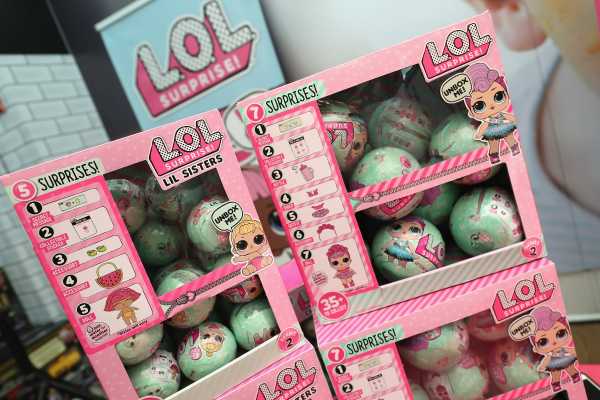
There are currently hundreds of thousands of YouTube videos of L.O.L. Surprise! Dolls being unboxed — removed from their elaborate packaging and played with — and some have as many as 24 million views. This billion-dollar toy perfectly demonstrates the power and influence YouTube has had on toys.
Children today spend a lot of time online. Research from Common Sense Media has found that kids in the US age 8 or younger average about two hours and 19 minutes a day of screen time. In 2016, the research firm Childwise found that children spend more time online than watching TV.
While YouTube does not release specific data about how many of its users are kids, one study found that kids age 8 or younger spend 65 percent of their time online on YouTube. In 2017, the Pew Research Center reported that 81 percent of American parents with kids age 11 or younger let their kids watch YouTube, even though the site is technically for children age 13 or older. YouTube even has an app specifically for children’s content, YouTube Kids.
Of course, the toy industry wants to meet children where they live. A decade ago, the success of a toy was typically determined by how fast it was flying off shelves at Toys R Us (RIP), but the life cycle of a toy today is about its popularity in YouTube’s stratosphere. Because of the platform’s influence, companies now create toys with YouTube in mind, and earmark large pockets of cash to pay toy influencers for reviews.
YouTube does not come without controversy when it comes to kids, though. Earlier this month, it was revealed that an alleged “network of pedophiles” was leaving sexually suggestive comments about young children on the site’s comments section. Plenty of parents also take issues with kids’ content on YouTube, lamenting that their children are becoming attached to mindless content that is nothing like the Sesame Street programming they are used to.
One online petition to ban toy channels on Youtube called toy unboxing “capitalist brainwashing.” It asks the site to “explain to the public that [YouTube] is an adult/teen video networking site that children should not be using anyways.” In Brazil, the public prosecutor’s office in São Paulo is suing Google over unboxing videos, accusing the tech giant, which owns YouTube, of “engaging in abusive advertising practices toward children.”
One thing is for sure: YouTube has changed the toy world, and how kids play.
The unboxing format is not native to YouTube, notes David Craig, a graduate school professor at the University of California’s Annenberg School for Communication and Journalism and the author of an in-depth research paper on the topic. The format first popped up in the early aughts, on sites like Unboxing.com and Unbox.it.
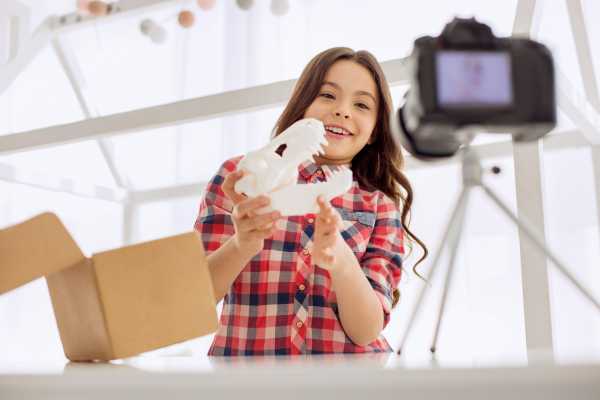
It was dubbed “geek porn” because the practice was initially relegated to electronics, when coveted gaming consoles would be unveiled to millions of tech fans. As the Wall Street Journal reported in 2006 when PlayStation put out its third gaming console, “the PS3 has sold out across the U.S. So, for many people, watching somebody else taking a PS3 out of its carton is the next best thing to owning one.”
When YouTube launched in 2005, much of the gadget community moved to the video-sharing platform. Since 2010, unboxing videos’ presence on YouTube has grown 871 percent. A 2014 Google study noted that “the magic behind unboxing videos is that they tap into the child-like anticipation we all feel for something shiny and new.”
Toy unboxing became a phenomenon on YouTube because toys are a perfect fit for the format. They’re fun! They’re colorful! They have moving parts and surprises! It’s all the joy of 8-year-old’s birthday party and none of the messy cleanup. According to the Guardian, one-fifth of the top 100 channels on YouTube are about toys, and these videos bring in tens of billions of hits.
Tons of money is currently being made from toy unboxing videos, with YouTube influencers making bank for product reviews and being paid for sponsored content, too. Perhaps the biggest success is the channel Ryan ToysReview, which stars an 8-year-old toy influencer named Ryan who is now YouTube’s top-paid star, earning $22 million last year, according to Forbes.
In addition to funding these influencers, toy brands want a slice of YouTube’s money too. Mattel’s Barbie, for example, isn’t just a doll who’s for sale anymore; she’s also a YouTube vlogger with more than 5 million subscribers. Hasbro, too, has debuted the show Hanazuki specifically for YouTube. Kids can stick to watching the channel, but they can buy Hanazuki swag that’s advertised, too.
Toys have long been an enormous and lucrative business, with the global industry earning $21.6 billion last year, according to NPD Group’s Global Toy Market Report. The American companies within the industry are big and powerful — Mattel, Hasbro, Lego, Spin Master, Melissa & Doug, and MGA Entertainment, just to name a few. It only makes sense that these companies would eventually get into bed with YouTube, an estimated $15 billion business with 1.9 billion monthly users.
At the Toy Fair New York, there wasn’t a corner without YouTube’s influence. Ryan from Ryan ToysReview was there, promoting his toy line, Ryan’s World. At another booth, there was a giant sign for Karina Garcia, a 25-year-old YouTube star who’s been dubbed YouTube’s Slime Queen. She unboxes slime to her 8 million subscribers and recently launched a slime brand of her own, Craft City, sold at stores like Target.
Across the hall, there were toy distributors selling the branded products of “Baby Shark,” the annoyingly catchy video from the Korean content studio Pinkfong that has close to 2.5 billion views. Pinkfong is now rolling out Baby Shark dolls and electronic books. Some products are already available through Walmart and Amazon, but Rudy Flores, a sales manager promoting the products at the toy fair, says that “when the rest of the products hit US stores in three to four months, you’ll never see the end of Baby Shark.”
Even cardboard has become YouTube-ified. Hog Wild Toys, a company based in Oregon, was debuting Tony Hawk Box Boarders, little figurines on magnets that roll around halfpipes. The board game comes with a slot to hold your phone (to better record the cardboard skaters’ sick tricks), as well as special smartphone lenses and an app with easy editing for YouTube uploads.
The biggest change to come to the toy industry as a result of YouTube, though, is in packaging. Toy brands are riffing on the unboxing trend by developing special boxes or wrapping that specifically look good on camera, and by creating as many surprises as possible. MGA CEO Isaac Larian says this explains the appetite for L.O.L. Surprise! Dolls.
“The packaging builds on multiple elements of surprise, but we are also constantly keeping up with the kids,” he says. “We launched in 2016, and we literally change the doll every three months to keep up with interests. Because if you don’t keep up, they will move onto something else.”
L.O.L. Surprise! Dolls cost about $10.99, but rare editions can retail for $69.99, which fans are more than willing to pay. Larian took the opportunity to bash his company’s main competitor, Mattel, which has been fighting to stay relevant: “I was curious to see if this whole unboxing phenomenon would just be a passing trend, but it’s become a major phenomenon, to the point that we’re selling double what Barbie does!”
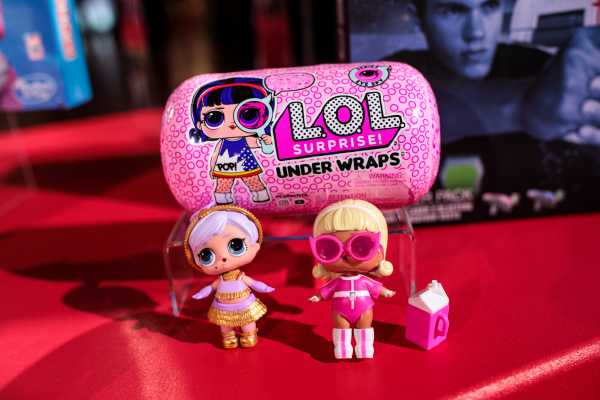
MGA isn’t the only toy giant adapting for YouTube’s unboxing audience. Jonathan Berkowitz, the president of Hasbro, says his toy company “is starting to study all our brands to make sure they have an experience onscreen.” In May 2018, Hasbro launched Lost Kitties, plastic cats that come in a cardboard carton and are buried in putty.
While Lost Kitties is directly aimed at unboxing, Berkowitz says YouTube virility is the new goal for all toys.
“Games were always fun to play, but now, they need to be both fun to play and fun to watch,” he says. “To be successful today, everything has to be interactive and engaging. Kids like to discover surprises inside of toys, or eggs, and they like watching that too.”
2019 is going to be a major year for kids’ movies. Live-action remakes like Aladdin and The Lion King are sure to nab top spots at the box office, as will the highly anticipated latest installments of the Stars Wars, Avengers, and Toy Story franchises.
But unlike kids’ movies of the past, the success of these films won’t necessarily dictate if their toys will start trending. YouTube will.
“The days of making toys after movies or Star Wars is over,” Larian declares. “In this business, digital is everything.”
Want more stories from The Goods by Vox? Sign up for our newsletter here.
Sourse: vox.com

